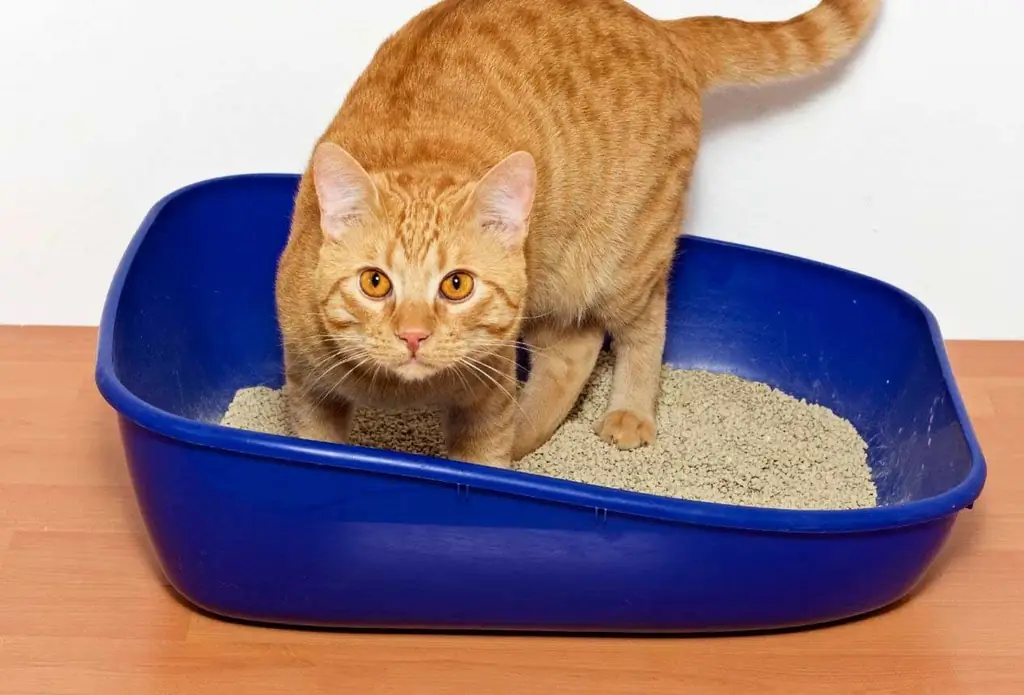
Table of contents:
- Author Bailey Albertson [email protected].
- Public 2023-12-17 12:53.
- Last modified 2025-01-23 12:41.
Training a cat is a doable task

It would seem that there is nothing difficult in choosing a cat litter. In pet stores, the variety of options is impressive, there are trays for every taste and wallet. But there is one important detail: you need a new friend to like the toilet as much as you. Otherwise, problems cannot be avoided: potty training will cost a lot of spent nerves, energy and time.
Content
-
1 Choosing a toilet
- 1.1 Where to place
-
1.2 Which tray to choose
1.2.1 Video: how to train a cat to the toilet
-
2 Choosing a filler
- 2.1 Wood filler
- 2.2 Clay filler
- 2.3 Silica gel
-
2.4 What other fillers are there
2.4.1 Table: Cat litter
-
3 We accustom to the tray
- 3.1 Teaching a kitten to go to the toilet
- 3.2 How to train an adult animal to toilet
- 4 Reviews
Choosing a toilet
As soon as a fluffy pet appeared in your house, the question of a “latrine” arises immediately. Therefore, it would be nice to worry about it in advance, that is, before you bring your treasure into the house. If due to circumstances this did not work out, try to get a toilet as soon as possible.
The age of the newfound pet is of great importance. For a kitten, it is better to buy a small, open tray no more than 10 cm high. It will be convenient for the kid to climb into it, and you can control the process. Subsequently, the toilet will need to be changed. There are many factors to consider when choosing the right option.
Where to place
The first step is to decide where the litter box will be. The most popular place is a toilet or a bathroom, which is justified, since:
- In this case, the tray is convenient to clean and wash.
- If there is a smell, it will not spread throughout the apartment.
- When a cat is also a member of the family for you, it is logical that she will do all her "needs" where she is supposed to.
If you decide to install a litter box in the bathroom or toilet, the first step is to ensure that your pet has access to its "place". The options may be different:
- opened door;
- a cut-out loophole at the bottom of the door, it can be covered with a special door to give an aesthetic appearance and prevent the spread of odor;
- a cutout in the wall, also decorated with a small door.
There are owners who simply teach the cat to ask to use the toilet, for example, to meow or scratch the door. In this case, do not forget to open access to the tray when no one is at home.

An interesting design option for a cat toilet in the bathroom is to equip it in a cabinet with a hole cut in the door
For me, for example, placing the litter box in the toilet is the most acceptable choice. It is the most hygienic and convenient.
But not all owners like to have a cat's "place" in the bathroom. Someone is uncomfortable with the constantly open door to the toilet, and someone simply does not find there sufficient space to install the tray. Therefore, other options are being considered: in the corridor or room, on the balcony or loggia, in the kitchen.
When installing a litter box in the corridor, remember that many cats do not like to do their "business" in plain sight. They need a secluded place. If not, purchase a house tray. The main thing is that the cat feels calm and the toilet does not bother you.

Place a toilet for a cat in a place accessible to a pet, but so that it does not interfere with people living in the house
If you decide to put the tray in the room, keep in mind that some pets love to rake the litter, which flies out of the tray and scatters on the floor. Of course, this is not at all hygienic, so in this case it is better to take a tray with additional overhead sides. The toilet must be hidden from prying eyes, providing free access to the cat.
Placing a toilet on a balcony or loggia is a very good option: out of sight, smell and dirt will not spread throughout the apartment. The main thing is that the pet can always get to its "place".
In my opinion, the most unfortunate place to place a cat's lavatory is the kitchen. After all, we eat there, and the toilet implies both an unpleasant odor and a reduced level of hygiene. Besides, it's just not aesthetic. Moreover, cats also have their own "principles". Very few cats will walk where they eat.
Which tray to choose
Manufacturers offer a variety of cat litter options. The choice depends on the installation site, the nature of the pet, your preferences:
-
If you want to save money, buy a regular tray: it costs around 130 rubles, is compact, easy to use, but does not at all delay the filler, which will spill out of it.

Simple cat litter box Simple cat litter box - compact, budget option
-
You can buy the same tray, but with a mesh: the filler is poured onto the bottom, and a grate is placed on top. Thus, the cat will not scatter the filler and pull it apart on its paws. It is also convenient to clean a toilet with a mesh by simply flushing the grill. But this will have to be done constantly, so this option is not convenient for all owners. And many cats like to rummage in filler, hide their "works". The cost of such a toilet is about 150 rubles.

Cat tray with mesh A mesh tray keeps your cat's feet dry and the floor clean
-
A good option is a tray with additional overhead sides. The filler will not crumble. In addition, if it seems more convenient to you, you can lay the diaper on the bottom, clamping its edges with bumpers. True, you will have to change the diaper constantly. You can buy a similar toilet for a pet for 200-250 rubles.

High-sided tray with overlay frame Cover frame on tray prevents filler from spilling out
-
A great option is a house tray. Of course, it is not immediately clear when it is time to clean the toilet, so the main thing is not to forget. But there are no unpleasant smells, and the cat will be able to do his "business" in solitude. It is important that the animal is not afraid of this structure. Such a house is more expensive than a simple tray. But you will most likely have to buy it only once and for the entire cat's life. Otherwise, the adult cat may not accept the new "pot". The simplest one costs between 600-800 rubles, the price of design options can go up to 5 thousand rubles.

Toilet house for cats Toilets-houses are so diverse that it is not difficult to choose a successful model for the interior of the house
-
A very sophisticated option is a toilet with automatic cleaning. It does not need to be washed, everything will be done by itself. You just need to provide that such trays need to be connected to a water supply. And it may happen that the cat will not accept such a toilet, being afraid of the noise during cleaning. It will cost the owner 7-10 thousand rubles.

Automatic cat litter box Automatic cat litter boxes do not need to be washed often
The first cat, Tishka, was brought to me by my mother when I was in the fifth grade. Then we used a simple tray with torn paper for it. The problem was that this clean animal did not go to any dirty toilet. Everyone had to keep an eye on the cleanliness and clean up all the time. This is very inconvenient and risky, because when it happened to "miss", Tisha went under the bath. Cleaning under the bathroom after it was extremely problematic. It is a pity that industrial fillers were not widely used at that time. Now for our darling Murka, we opted for a house-tray. The cat immediately got used to it. She doesn't like witnesses, so this option turned out to be perfect. Only the door had to be removed, since our royal family rejected this device. She is comfortable when nothing is in the way.
There are also special devices for toilet training cats. It is necessary to begin such training no earlier than from six months. Make sure that the animal has access to the toilet, the lid of which must always be open. Do the following:
- First, place the tray close to the toilet.
- Then gradually raise it (you can put newspapers, magazines or something else): a day by one or two centimeters. Also reduce the amount of filler.
- Once the litter box is level with yours, place the litter box on top of the toilet, securing it securely so it doesn't wobble or fall.
- After your pet has developed a persistent habit of going to the toilet, remove the litter box. The cat will have no choice but to go to the designated place.
Video: how to train a cat to the toilet
youtube.com/watch?v=jj7S_4xE08Q
Choosing a filler
There are several types of industrial fillers. And also there are always free options - newspaper, sand, earth. Someone does not use filler at all.
Wood filler
This is the most suitable option for a kitten. It is environmentally friendly and safe. If the baby chews on the filler, which often happens, nothing bad will happen. It is also a very good and most inexpensive option for adult cats. The filler is produced in the form of compressed granules, which crumble when wet, evenly distributed over the bottom of the tray. Wood absorbs moisture well, but rather quickly depletes the absorption reserve. Therefore, you will have to change such a filler quite often, at least twice a week, otherwise dampness and an unpleasant odor cannot be avoided. It can be flushed down the toilet, but not all at once, but in parts. Experts advise against taking a filler with aromatic additives. They can be harmful to the pet or simply dislike him and thereby scare away.

Wood litter for cat litter is safe and environmentally friendly
Clay filler
Clumping aggregate is made from minerals and bentonite clay. From moisture, it forms into lumps, which are removed with a scoop without replacing the filler. A very convenient option for busy people.
You can purchase an absorbent clay litter. It retains moisture without clumping. Such a filler must be completely changed regularly. But remember that this species is not suitable for kittens, as they can eat it and get a blockage in the intestines. It is not very convenient that it sticks to the paws and spreads around the apartment. Also, some cats may experience irritation of the mucous membranes from dust generated when scraping. You cannot flush the clay filler down the toilet.

Mineral filler is easy to use and economical
Silica gel
The silica gel filler absorbs a lot of moisture and retains odor well. You can judge the need to replace it by changing the color. The disadvantage of this option can be considered its higher cost compared to the previous ones.

Silica gel filler absorbs unpleasant odors and retains moisture
What other fillers are there
It is rare to find corn filler in pet stores. By the principle of action, it is similar to wood. It is environmentally friendly, affordable, and emits popcorn aroma when wet. Cats love to rummage through this litter. However, it is rather loose and light, so you will need a tray with high sides.
It is extremely rare in pet stores to find various fillers from Japan. Mostly they can only be purchased online. The price for them is high, but it is justified by hypoallergenicity, convenience and exoticism. It can be:
- granules of paper and starch with a color indicator of contamination;
- small cypress wood cylinders;
- backfill from cellulose with activated carbon;
- compressed soy fiber filler.
Sawdust can be used as a "folk" filler. This is probably the best option, but they retain moisture and odor worse than industrial wood filler, so they need to be changed every two days.
You can do without filler altogether if you have enough free time to keep your pet's toilet clean. Install a tray with a grate for him: all moisture will flow down, and the paws will remain dry and clean. But keep in mind that after each use, such a toilet will need to be rinsed and thoroughly washed once a day.
Table: Cat Litter Fillers
| Name | Structure | Price | pros | Minuses | Replacement frequency |
| Silica gel | Silica granules | 300-350 rubles for 3 liters |
|
|
Twice a month |
| Mineral clumping | Minerals and bentonite clay | Within 100 rubles for 3 liters |
|
|
Does not require complete replacement |
| Mineral absorbent | Clay | 200-250 rubles for 15 liters |
|
|
Once or twice a week |
| Wood pellets | Compressed sawdust | Within 100 rubles for 3 liters, 150 rubles for 12 liters |
|
|
Two times a week |
| Corn filler | Corn pellets | 160 rubles for 3 liters, 250 rubles for 6 liters |
|
|
Once a week |
| Sawdust | Wood | 250 rubles for 14 liters |
|
|
Of necessity |
| Japanese fillers |
|
From 1 thousand rubles for 5-7 liters |
|
|
According to the instructions |
| Empty tray with lattice | - | - |
|
You must constantly monitor the cleanliness of the tray. | After every use |
We train to the tray
It is of great importance whether you took a small kitten or an adult animal, as well as where your pet lived: on the street, at home, with a breeder. To help your new friend quickly figure out why he is periodically seated in an incomprehensible box (especially if he has not previously encountered this), you need to show what it is for. After you have put the pet on the "pot", rummage in the filler with its paw, as if imitating the raking process. If an "accident" occurs, be sure to put a rag soaked in urine or solid waste into the litter box. Cats are good at orienting themselves by smells.
It is not uncommon for an animal to start using its toilet for play. Don't worry if a kitten does this. This is the norm for babies. The cat can play with litter or the litter box for up to one year. If the habit has not disappeared, you need to make it clear to the animal that the tray is not a place for play. Distract him with another toy, try to carry the cat away from the toilet as soon as you see that he is not using it for its intended purpose. If your pet plays with litter, change it to a different type. For example, if your cat likes to play with mineral, buy silica gel. Often, after such actions, the problem disappears. You can temporarily remove the litter or install a grate to prevent the animal from digging.
Teaching a kitten to go to the toilet
If a little pet has appeared in the house, start potty training immediately. The less he walks past, the faster and better he perceives the tray as the only place to relieve himself:
- Introduce the kitten to his toilet without making sudden movements or making loud noises. Learning should be as calm and friendly as possible. Let him poke around, sniff. Do not force him to sit there if he clearly wants to get out. The baby should associate the tray only with positive emotions.
- Be patient with your pet toilet training process. Usually kittens relieve themselves after sleeping or eating. The fussy behavior of the crumbs is noticeable immediately. He begins to meow plaintively, twirl, sniff - obviously looking for a place. Grab it under your tummy and transfer it to the tray. Pat it, talk kindly, hold it quietly if it comes out. It is very important to get it to go. If the baby did everything right, praise, stroke, give a treat. If this time there is an embarrassment, in no case shout, do not hit - this will only frighten the animal, undermine the credibility of you.
- Be persistent. Watch the kitten, try not to miss the moment. Gently, but persistently, make sure that the baby does his "business" exactly where he was shown. Do not give up, a lot depends on your actions. If the kitten made a puddle or something more serious in the wrong place, blot with a cloth and transfer to the tray. The smell will help him navigate.
- Show understanding. The little fool is under stress, he was torn away from his mother, placed in an unfamiliar environment, all around are strangers. Help him get comfortable, understand that he will not be offended here. The sooner the kitten feels calm, the better he will begin to understand what is wanted from him.
The most favorable age for training a kitten to go to the litter box is one month. At this time, the mother cat already stops caring for her babies in terms of hygiene. One month old baby quickly learns to "walk" correctly. But don't panic if your pet has already grown up. You can teach an animal at any age.

A simple, small litter box is the optimal first toilet for a kitten
How to train an adult animal to the toilet
If an adult cat (or kitty) appeared in the house, who lived in an apartment and was already accustomed to the tray, there should be no problems. But it happens that the animal relieves itself wherever it wants. There are reasons why the animal has decided that the litter box is not its topic. Observe, analyze, experiment. Perhaps you don't like the toilet itself: it is small or in the wrong place, or, especially if it is a house-tray, it is scary in it. Maybe, on the contrary, it is too open, and the cat is shy. Either they don't like the filler, or they even like it very much and it is better for them to play, and not get dirty. There are animals who do not want to go "big" and "small" in the same place, then you have to take two trays.
If the cat stubbornly goes to do "business" in the corners, try to put the cat litter there. And if the animal begins to use the proposed tray, gradually move aside its final dislocation. Also, breeders advise such methods of dealing with "surprises" as placing bowls of food in the wrong, but chosen place. Cats don't eat where they shit.
The crime scenes need to be processed. Wipe the floor, walls with vinegar or a weak solution of potassium permanganate. Treat other hard surfaces with alcohol or iodine solution (10-15 drops per liter of water). For the purpose of disinfection, hydrogen peroxide is also used (cannot be applied to fabric, varnished, polished surfaces). If the cat shits on the flowers, sprinkle the ground with ground pepper. To remove the smell of urine, a cloth soaked in laundry soap helps to wipe the surfaces.
If the animal lived on the street, you can first fill the tray with earth, sand, hay. That is, what he is used to on the street. Later, after acquiring a stable habit, it is better to switch to industrial types of filler. In an extremely problematic situation, when a cat does not want to obey the rules imposed on him at all, experienced breeders advise to strongly limit his habitat. Temporarily, of course. Moreover, in some cases, they limit it as much as possible: a cage in which there is only space for a couch, bowls of food and water, and a toilet. The animal will not shit next to food and on a sunbed. And there are no other options besides the tray. Thus, this measure forces the rebel to comply. It's a pity, of course, but it happens that this is the only way.

Sometimes the cat does not go to the toilet in the designated area, because it does not have time to get to it due to health problems
But it so happens that the reason lies not at all in the character or habits of the animal. Perhaps his inability to get things done in the right place signals a health problem. Perhaps the cat does not have time to get to the litter box due to problems with the genitourinary system. An inflammatory disorder such as cystitis may be the cause. Or, the animal experiences severe discomfort when getting into its toilet due to trauma. Therefore, if you suspect something was wrong, urgently take your pet to the veterinarian. Ruling out your friend's illness is very important. Also, sometimes a cat's toilet is associated with pain, that is, the cat thinks that the pain is not caused by an illness, but by the litter box.
Psychological problems should also be noted. The cat tends to mark its territory. And we will not exclude the option of revenge on someone from the family members, as well as jealousy if someone appears in the house to whom the beloved owner began to pay attention.
Reviews
Teaching a pet the intricacies of living in an apartment is often troublesome and requires an expenditure of energy, time and money. Especially when it comes to toilet training. But the more acute will be the feeling of joy from the result of the work done by both of you. And the described recommendations will help you do everything with a minimum of difficulties.
Recommended:
The Cat Stopped Eating Dry Food: Why Not Eating, What To Do, How To Train And Transfer To Another, Veterinarian Advice

Why does the cat not eat dry food? What to do to improve your pet's appetite. When is it necessary to visit a veterinarian
How To Train A Cat Or Cat To A Scratching Post, Including In The Form Of A House: Features Of Training Kittens And Adult Animals, Recommendations And Reviews
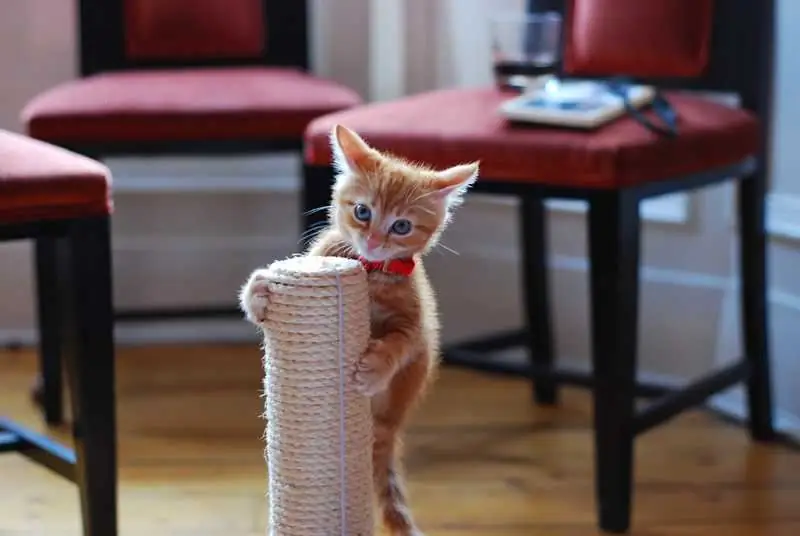
Why cats need to sharpen their claws. How to draw your pet's attention to a device. What to do if your cat doesn't want to use the scratching post
Dry And Hot Nose In A Cat Or Cat: Causes (a Symptom Of What Diseases And Conditions May Be) Phenomena In Kittens And Adult Animals
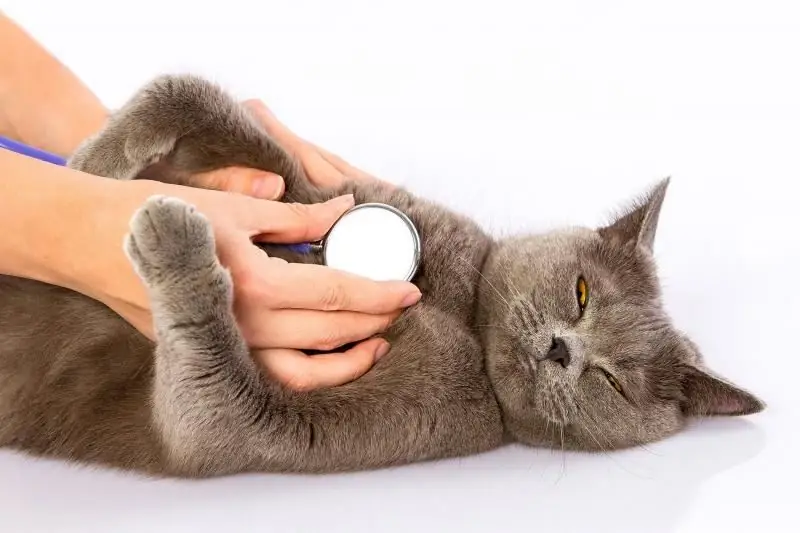
In what situations a warm and dry nose in a cat is normal, and when in case of illness. How to understand that a cat is sick. When a doctor is urgently needed. Recommendations
How To Wean A Cat Or Cat To Shit In The Wrong Place: Expert Advice On Weaning Kittens And Adult Animals, Folk Remedies
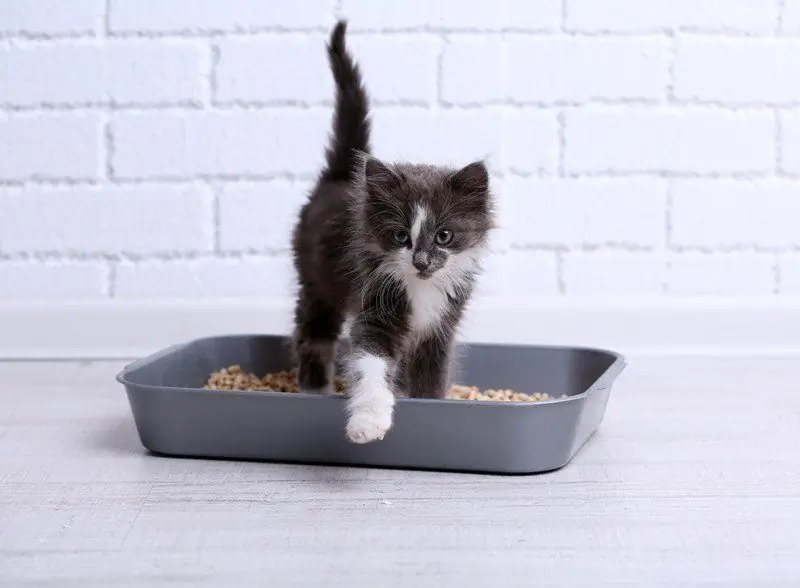
Why does the pet refuse to go to the litter box? How to calculate the reason for indirect evidence. What to do to stop the animal from shitting in the wrong place
How To Wean A Cat And A Cat To Tear Wallpaper And Furniture, Features Of Weaning Kittens And Adult Animals, Useful Tips And Tricks, Reviews
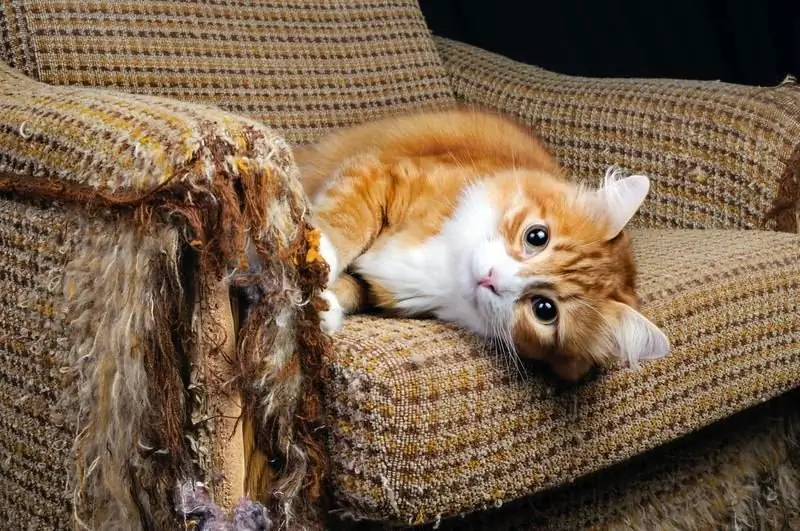
Why does a cat tear wallpaper and furniture? How to prevent damage to property. What to do if you can't wean your cat
